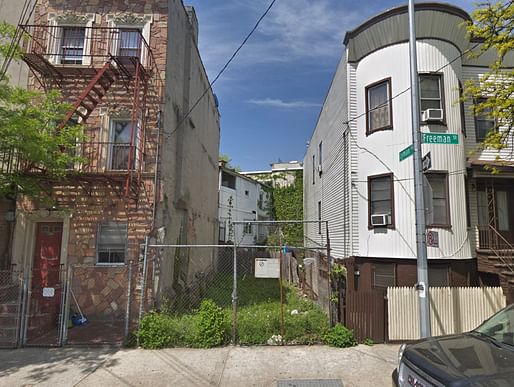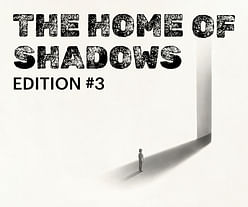

Throughout New York City's bustling neighborhoods, and amongst some of the most expensive real estate in the country, one can find small, oddly shaped vacant lots, often public land. As part of Mayor Bill de Blasio's plan to increase housing production, the city has been moving through its inventory of underutilized plots, though according to one estimate, over 1,015 acres of vacant land remains.
Much of the leftovers are awkwardly small and irregular lots, seen as difficult to develop on. But, thanks to a collaboration between the NYC Department of Housing Preservation & Development and AIA New York, the city is looking to unlock the potential of these tiny sites as a way of increasing its supply of low-cost housing.
This morning, the city agency announced a design competition that calls on architects to present housing prototypes for 23 small urban plots. The program, called Big Ideas for Small Lots NYC, asks architects to present designs that make virtue out of narrow strips of land and triangular and trapezoidal plots, some as thin as 13 feet and some as small as a 663 square foot shallow lot in the Bronx. While tiny, the city is hoping for proposals that demonstrate feasible, replicable housing solutions across various site and neighborhood conditions.
For the first phase, the open design call will focus on a location on the northern side of West 136th Street, a site chosen for its specific challenges—e.g. limited sunlight, narrow frontage—that are similarly present at many of New York's publicly owned lots. After five finalists are chosen by a jury comprised of urban designers, planners, architects, and developers, the remaining contestants will be asked to assemble a development team and expand their Stage I submissions into site-specific proposals to be developed for affordable housing.
As land in cities becomes increasingly scarce, municipalities across the country have relied on developers and architects to come up with clever solutions to fill in any urban gaps. With de Blasio's ambitious target of building 300,000 affordable homes by 2026, the city is similarly relying on urban infill design as a key strategy and hopes architects can offer lessons in making the most of skyrocketing land prices and dwindling resources.
For more information on the competition, and to submit, visit here.

Morocco Oasis Retreat
Register by Thu, Nov 14, 2024
Submit by Thu, Dec 12, 2024

Norman Foster Foundation / Kharkiv Freedom Square Revival
Register by Tue, Nov 5, 2024
Submit by Tue, Nov 26, 2024

The Home of Shadows / Edition #3
Register by Thu, Nov 21, 2024
Submit by Mon, Mar 3, 2025

Denver Single-Stair Housing Challenge
Register by Thu, Dec 12, 2024
Submit by Thu, Jan 23, 2025
No Comments